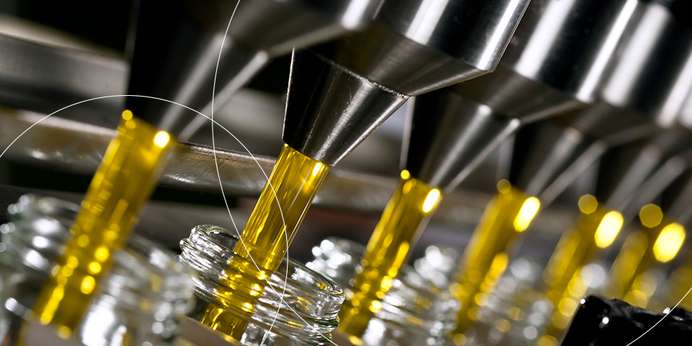
Vegetable oils such as olive oil and peanut oil must meet consumers' visual expectations with consistent coloring. Vegetable oil manufacturers can please customers and increase profits with color measurement solutions like spectrophotometers.

Vegetable oils such as olive oil and peanut oil must meet consumers' visual expectations with consistent coloring. Vegetable oil manufacturers can please customers and increase profits with color measurement solutions like spectrophotometers.
Color and appearance consistency matters when it comes to vegetable oil. Vegetable oil is graded to a level of refinement by comparing the color of the oil against a reference. Oil that does not meet the color standard may appear low quality, and consumers will likely not purchase it.
The importance of color and appearance consistency to oil manufacturers cannot be emphasized enough. Both are critical factors consumers use when deciding which oils to purchase. Color and appearance indicate flavor, freshness and likelihood of spoilage. Consumers expect their vegetable oil to have a certain hue. If the color doesn't match their expectation, the consumer may perceive the taste as being incorrect or the freshness compromised, even if the oil is safe and fresh.
Vegetable oil gets its color from the plant material and fruits used to make it. For example, vegetable oil is made from crushing dried soybeans, olive oil comes from pressing ripened olives, and peanut oil is made from expelling the oil from roasted peanuts. As a result, these oils have different colors.
Besides the ingredients, other factors influence the color consistency of vegetable oil. When improperly stored, vegetable oil is exposed to light, heat, and oxygen. Oxidation in vegetable oil causes its carotenoids and chlorophyll to dissipate, resulting in a color change. This exposure can also affect the oil's scent and taste.
For instance, when olive oil is exposed to light, it can turn red-orange, smell like peanuts, and taste like pumpkins. Many vegetable oil manufacturers store olive oil in dark glass or plastic bottles to prevent these changes.
Spectrophotometers can be used to measure vegetable oil color and turbidity throughout the entire production process to improve and maintain color and appearance consistency. As a result, vegetable oil manufacturers can meet food quality standards from the FDA and customers' expectations.
The HunterLab Vista spectrophotometer has the features necessary to assess edible oil color. It can measure the color of samples in vials and cuvettes with extreme accuracy and record transmission color and haze in one measurement.
HunterLab has worked with thousands of vegetable oil manufacturers to find the ideal color measurement solution for their applications. We understand the importance of color accuracy and have the solutions to achieve it.
Measure the color of your vegetable oil with color spectrophotometers from HunterLab. Browse our spectrophotometers for vegetable oil online and contact us today for more information.
HunterLab goes beyond color, delivering precise, science-backed solutions that help industries achieve superior quality and appearance control. As a global leader in spectrophotometry, we empower businesses to reduce waste, improve efficiency, and enhance product consistency—directly impacting the bottom line. By combining innovation, real-world expertise, and sustainable measurement solutions, we help manufacturers optimize production, minimize material loss, and meet the highest industry standards. Follow us on LinkedIn